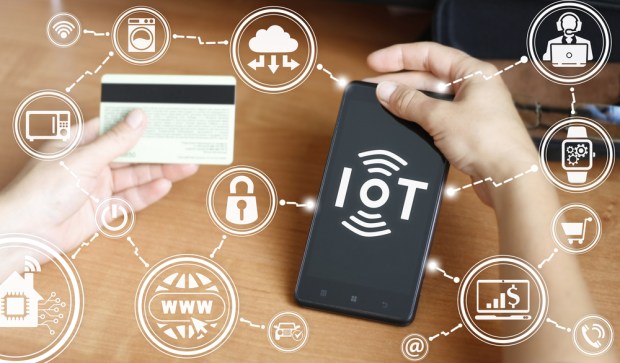The Connected Commerce Network Effect

The world’s not ready for the Internet of Things (IoT).
Oh, consumers are excited, and they have embraced connected commerce with both thumbs — and their voice. People have embraced smart technology such as the Apple Watch, Amazon Echo, Fitbit and even connected scales and blood pressure monitors by Withings.
PYMNTS’ study in collaboration with Visa, “How We Will Pay,” quantifies just how many people are on board. Seventy-five percent owned more than just a computer and a smartphone, and 83 percent viewed their devices as a way to eliminate friction from the shopping experience, both on- and off-line. Forty-four percent wished they could automatically pay for purchases with a connected device rather than going through a checkout process.
Beyond that, there’s a collective vision: In-store kiosks offering personalized brand experiences, “invisible” payments (à la Amazon Go) and even virtual reality could all be woven into the future digital fabric. People are excited about the future of IoT — more so than they are about its present.
But Creditcall CEO Lars Dige Pedersen said the payments and commerce ecosystem isn’t ready to support the Internet of Things just yet. The age of the IoT is here, he claimed, but “it has not yet reached the tipping point.” He believes the IoT’s true power will be unlocked when two things happen.
First, Pedersen said, connected devices beget connected devices. As more of them enter the market, they will increase each other’s value. Second, merchants must connect what Pedersen called “data islands” in order to create a true omnichannel experience that is equally personal, whether guests are shopping online or in stores.
To the first point, Pedersen said, “We will see these devices and associated solutions increasingly benefiting as additional related devices are brought to market, which will lead to a network effect. That is, the perceived value of the totality of solutions increases exponentially as the number of sub elements goes up.”
That’s what he calls the “tipping point,” and that’s when serious, exponential growth should kick in for the Internet of Things.
To the second point, Pedersen said that a true omnichannel retail experience can only be achieved when retailers bridge the gap between bricks and clicks. Merchants must be able to identify customers equally well online and in-store so that they can provide a tailored experience.
“One of the early promises of IoT in a retail setting is to mirror the online experience in terms of a personalized brand experience,” said Pedersen.
While retailers are beginning to cotton on to this philosophy, most still lack the capability to link those disconnected “data islands” that would provide such powerful insights into customer purchasing histories and other data. Common platforms will provide the necessary foundation on which to build the Internet of Things, and until those are in place, the network can only grow so much.
That’s where Creditcall is trying to help. The company bills itself as an “enabler of omnichannel capability,” fueling card-present connectivity by supporting online payments by nearly 30 different devices in the physical retail environment.
“As such, we have strong control over the in-store data island, and we can connect to the online data island in real time,” said Pedersen. “This way, we enable our partners to become omnichannel, just like we are currently ourselves.”
But triggering the tipping point will take more than just a panoply of connected devices and a data archipelago. It’s going to take consumer trust, and right now, that’s in fairly short supply.
In the age of smart technology enabling online payments on their behalf, the news comes as no surprise that people are very concerned about data privacy and data security. Wide-scale adoption, Pedersen said, can only happen once people feel confident that conducting commerce this way is at least as safe as the other methods of paying, shopping and communicating they use today.
Pedersen suggested that this problem has actually already been solved. Existing payments devices have pioneered new methods of encryption — why reinvent the wheel? Encryption keys and point-to-point encryption can just as easily be applied to IoT devices by injecting the device with an identifying key that opens it up for encrypted communication.
Pedersen believes that the next six months to two years will see many exciting developments due to the increasing complexity of payments. Some of these shifts are already underway.
For example, he predicts that the world will start to see more independent software vendors as a growing number of merchant IT teams look for assistance. Even established payments companies like Visa will begin to partner more often as they strive to keep abreast of the changes.
Payments and banking are likely to merge. Biometrics will make its mark as an authentication method, with emerging markets leap-frogging past more traditional methods.
Retailers will start to position themselves above the competition by offering personalized, cross-channel brand experiences, and that will be a driver for customer excitement and engagement.
